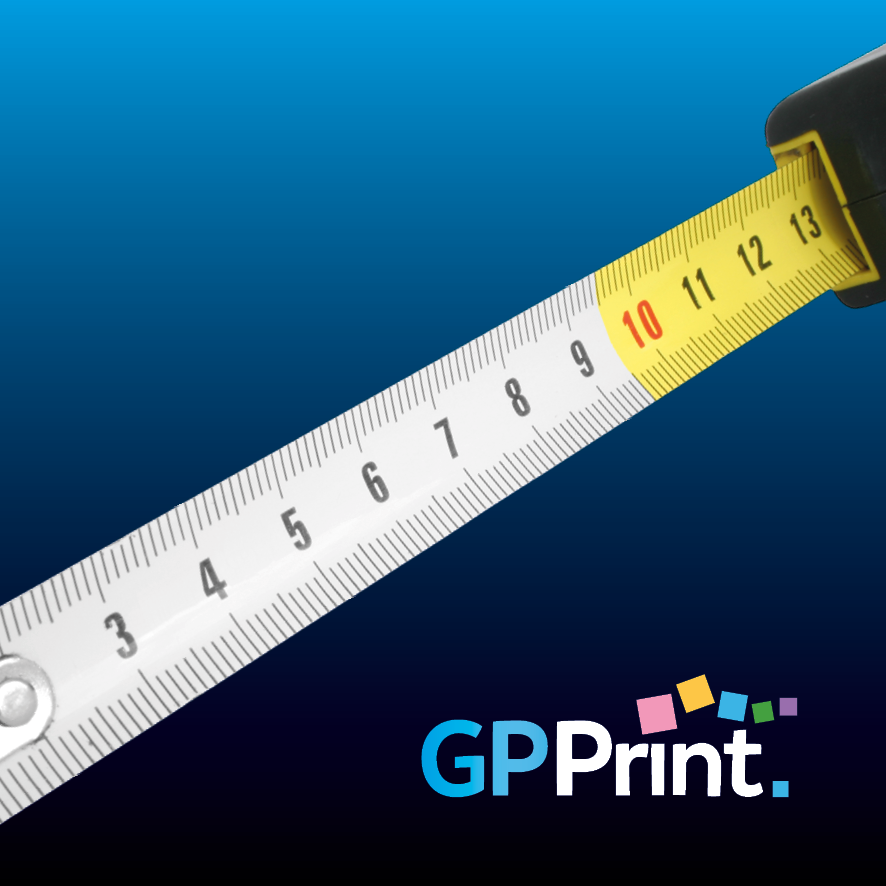It really does matter when it comes to print.

Artwork size is critical to ensuring your print looks great
When supplying artwork to us that you would like to have printed a certain size it is important that you either have supplied the right size or at least a size that we can change to the required size. A couple of things to remember is that we can shrink artwork easily enough but increasing the size can result in pixelation which means the image will not be as clear. This is not always the case if the supplied file is a PDF and is outlined or a vector then the size can be increased and decreased without any loss of quality.
The other thing to remember is that the ratio of width to height needs to be maintained so not to stretch one way giving an out of proportion look to the final print. Ideally if you are supplying an image that isn’t the right size it needs to be able to shrink down to a size that proportionally matches for example from A4 to A5. If a custom size such as 150x100mm for instance then each side needs to be reduced equally. By reducing by half you will end up with 75x50mm.
If supplying an image such as a JPG or PNG file, then knowing if you have the right size is easy enough with a calculation. Based on the image quality being 300dpi, you can get an idea of the size by using the pixel size, the calculation is pixels x 11.811 = millimetres. Do this for both width and height to give the overall document size.
Another helpful calculation is inch to mm, this is easily multiplied by 25.4 so 6 inches to mm is 6x25.4 to get 152.4mm. If working backwards from mm to inches, simply divide the mm by 25.4 to give the inches.
One more thing to consider when supplying your artwork is bleed. We have covered what is bleed in a previous news article. When supplying your artwork you need to add 2mm to each side meaning if you want the finished size to be 150x100mm, your artwork will need to be 154x104mm if the background colour image is to appear to run edge to edge.
Another nice calculation we use is knowing what spine size to make for your covers when creating books. We use a calculation based on converting the gsm of the paper to microns. 130gsm being 0.130micron. Multiply this by the number of sheets of paper known as leaves (pages divided by 2, pages are faces of a sheet) - for example 120 sheets x 0.13 is equal to 15.6mm. Round up for good measure and add 1mm to allow for score and glue room.
Text size is an important thing to think about. Having all your text on a one-sided leaflet is great but what if most people cannot read it? As a rule, we say that 6pt is the smallest you want to go. Bear in mind though that a large percentage of people still cannot read at this size. At 8pt, you are likely to hit up to 3 quarters of people and 10pt should hit the majority.
With this in mind, there is also the chance that people are viewing from a distance if you create a poster. Use the following table to give an idea of what can be seen at a ideal distance.
| Distance in Metres | Min font size in points | Min resolution in dpi |
| 0.6 arms length | 6 | 300 |
| 1 | 10 | 180 |
| 1.5 | 14 | 120 |
| 2 | 18 | 90 |
| 3 | 30 | 60 |
| 5 | 48 | 35 |
| 10 | 96 | 18 |
| 15 | 125 | 12 |
Now we've gone over the important bits, it's time to consider who you trust to personalise your products or create your paper goods. If you live in or around East Anglia, don't forget to check us out at GP Print for everything you need when it comes to personalisation and printing in Peterborough.